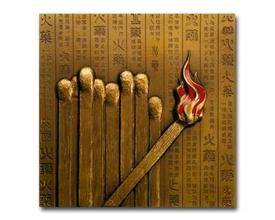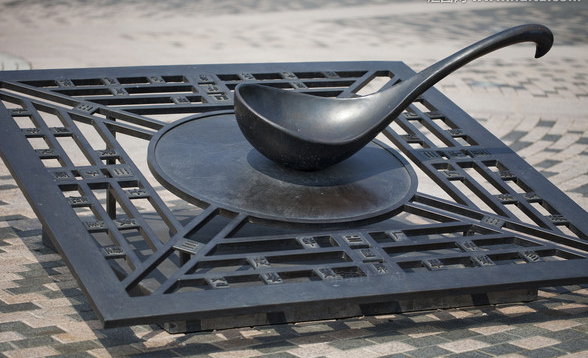(单词翻译:单击)
We take a lot of things for granted in the modern world. Fiber optic cables deliver enormous amounts of information at nearly the speed of light. You can hop into your car and shout your destination at your GPS navigation system, and a digitized and disembodied voice issues easy-to-follow directions. We have it pretty sweet here in the 21st century.
是否有了像GPS导航这样的发明,我们就忘记了古代文明的价值?要知道,正是这些文明,为我们今天的一切奠定了基石。我们对当今世界的很多技术都已经习以为常。光纤电缆以近乎光速的速度传输着海量信息;你进入驾驶室,对着GPS导航仪说出你的目的地,就会有数字化模拟人声简单明了地给你指明路线...21世纪的生活真是让我们尝遍了甜头。
As time marches on, it becomes easier to overlook the contributions of those who came before us. Even in the 19th century, Charles Duell, patent commissioner of the United States, reportedly remarked that everything that can be invented already has been invented.
随着时间流逝,我们越来越容易忽略前人所做的贡献。据报道,早在19世纪,美国专利局的专员查尔斯·迪尤尔(Charles Duell)就声称"所有能发明的东西,都已经发明出来了。"
Clearly, if Duell said such a thing, he was way off. The 20th and 21st centuries have seen enormous booms in ingenuity. However, his alleged words also reveal an understanding that seems to have been lost. He understood that humans have experienced flashes of brilliance and made discoveries throughout history. He also understood that these advances have so greatly accelerated human progress that everything following them seems to be built on the foundation provided by these early inventions.
如果迪尤尔当时确实说过这话,那他显然错的很离谱,因为在20世纪和21世纪,人类创造力空前繁荣,发明出了许许多多精妙的东西。然而,迪尤尔的这句话却反映了一种似乎已被人们忘却的认识:他深知纵观历史长河,人类已经历了一段辉煌时期并创造出许多伟大的发明;他更明白正是这些发明极大程度地推动了人类的进步,并为之后的一切科技发展奠定了坚实的基础。但是人们似乎已经把这些前人的贡献抛诸脑后了。
Perhaps no other ancient culture has contributed more to this advancement of human progress than the Chinese. Here are ten of the greatest inventions of the ancient nation, in no particular order.
说到为人类进步所做的贡献,大概没有哪种古老的文明能与古代中国相比。下面就是这个古老国度的十项伟大发明,排名不分先后。
10.Gunpowder
10.火药

We'll begin with arguably the most famous ancient Chinese invention. Legend has it that gunpowder was accidentally discovered by alchemists looking for a concoction that would create immortality in humans. Ironically, what these ancient chemists stumbled upon was an invention that could easily take human life.Early gunpowder was made of a mixture of potassium nitrate (saltpeter), charcoal and sulfur, and it was first described in 1044 in the Collection of the Most Important Military Techniques, compiled by Zeng Goliang. It's assumed the discovery of gunpowder occurred sometime earlier, since Zeng describes three different gunpowder mixtures and the Chinese used it for signal flares and fireworks before appropriating it for military use in rudimentary grenades.Over time, we realized that metals added to the mixture created brilliant colors in gunpowder explosions and -- kaboom! -- modern fireworks displays were born. It also makes a handy explosive for projectiles like bullets.
首先说到的火药,应该是中国古代发明中最杰出的一项了。传说火药是炼金术士在炼制长生不老丹药的过程中偶然发明的。然而很讽刺的是,这一发明不仅不能让人长生不老,却能轻易地取人性命。早期的火药是由硝酸钾(硝石)、木炭和硫磺混合而成的,最早记载于1044年曾公亮主编的《武经总要》一书中。此书中记录了三种火药,早在将火药用于军事用途、制作简易手榴弹之前,中国人已经用其来制作信号弹和鞭炮,由此可推断火药的发明时间应该还要更早。随后,人们发现在火药中加入一些金属元素可以使其爆炸时呈现出缤纷的色彩,于是,嘭!嘭!嘭!现代烟花表演诞生了。除此之外,火药的发明还催生了子弹之类的便携式弹药。
9.The Compass
9.指南针

Where would we be without the compass? We'd be lost, that's where. Those of us who hike in the woods or fly various aircraft have the Chinese to thank for guiding us home safely.Originally, the Chinese created their compasses to point to true south. This was because they considered south, not north, their cardinal direction. The earliest compasses were created in the fourth century B.C. and were made of lodestone.The mere existence of lodestone is the result of a bit of luck. Lodestone is a type of magnetite (a magnetic iron ore) that becomes highly magnetized when struck by lightning. The result is a mineral that's magnetized toward both the north and south poles. We're not certain precisely who came up with the clever idea of discerning direction using lodestone, but archaeological evidence shows the Chinese fashioned ladles that balanced on a divining board; the ladles would point the direction to inner harmony for ancient Chinese soothsayers.
如果没有指南针,我们会在哪里呢?应该已经迷路,不知身在何处了吧!在森林中远足的背包客,还有穿梭在各航班之间的空中飞人,真要好好感谢古代的中国人,他们发明的指南针,指引着大家平安回家。中国人发明指南针的初衷在于让它指向正南,因为他们认为主位是正南,而不是正北。最早的指南针出现在公元前4世纪,由天然磁石磨制而成。天然磁石的存在委实是上天的眷顾。天然磁石是一种被雷电击中之后高度磁化的磁铁矿石(带有磁性的铁矿石),可以自然指向南北两极。是谁这么聪明,想出用天然磁石来辨别方向的主意,我们已不得而知,但据考古学资料显示,是古代中国人发明了杓,并使其能在占卜盘上平稳转动;而杓也为中国古代的占卜者们指明了方向,助其走向内心的和谐与安宁。
8.Paper
8.纸

It's not entirely clear who first came up with the notion to convert thoughts into a written language. There was a horse race between the Sumerians in Mesopotamia, the Harappa in present day Pakistan and the Kemites in Egypt to be the first to formulate a written language. We do know that the first languages appear to have emerged around 5,000 years ago. One can even make the case that it dates back earlier -- that is, if one included artistic expressions like cave paintings as a form of written language. Once language began to develop, though, humans wrote on anything that would lay still long enough. Clay tablets, bamboo, papyrus and stone were only a few of the earliest writing surfaces.Things changed once the Chinese -- specifically, a man named Cai Lun -- invented the prototype for modern paper. Before Cai's breakthrough, the Chinese wrote on thin strips of bamboo and lengths of silk, but in A.D. 105, he created a mixture of wood fibers and water and pressed it onto a woven cloth. The weave in the cloth allowed the moisture in the pulpy mixture to seep out, resulting in a rough paper. Exactly what Cai wrote on his first piece of paper is unknown.
是谁首先想到用文字表达想法的主意,到现在我们还没完全搞清。“世界上最早的文字创造者”这一殊荣到底花落谁家,由美索不达米亚平原(Mesopotamia)的苏美尔人(Sumerians)、位于今巴基斯坦(Pakistan)境内的哈拉帕人(Harappa)以及古埃及的科密特人(Kemites)进行激烈的角逐。我们知道语言文字的首次出现大约是在5000年前,但如果你把类似于洞窟壁画这样的艺术表现形式也纳入文字范畴的话,“文字”的出现就可以追溯到更早的时期。然而一旦文字开始发展,人们便开始在任何东西上书写,只要它们铺起来足够长。泥板,竹简,纸莎草和石头仅仅是早期文字载体中的几种。自从中国人——特别是一个叫蔡伦的男子——发明了现代纸张的雏形,一切都开始改变了。在蔡伦的开创性发明之前,中国人在薄薄的竹简和长长的丝帛上写字。但是到了公元105年,蔡伦发明了一种木纤维和水的混合物,并将其按压在织布上,稀浆混合物中的水汽会透过织布渗出,然后一张粗糙的纸就制作完成了。但蔡伦到底在他发明的第一张纸上写了什么,这依旧悬而未知。
审校:落月 编辑:listen 来源:前十网


